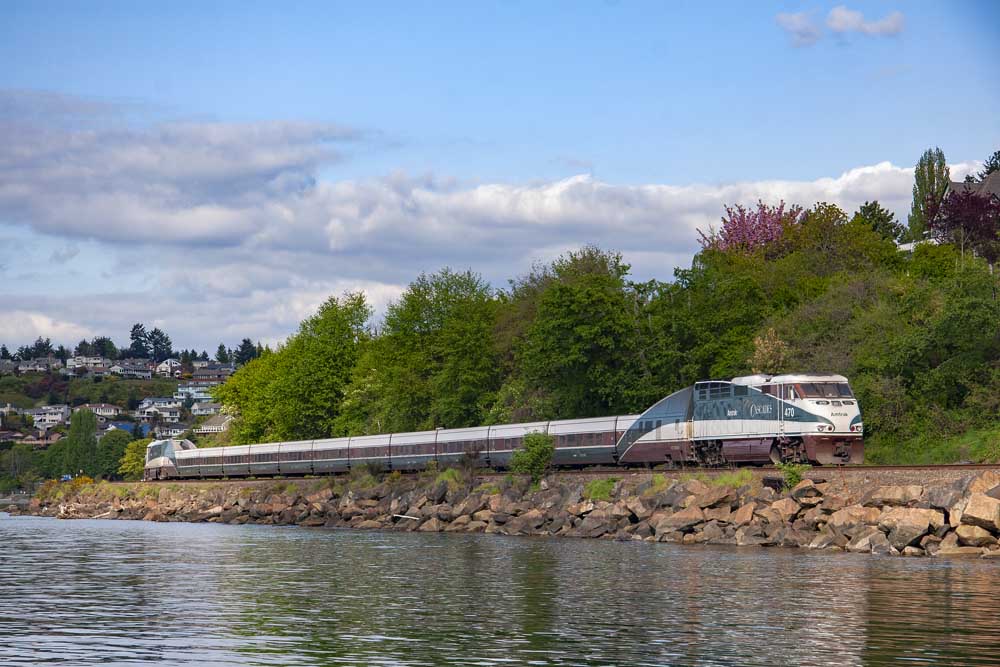
BEECH GROVE, Ind. — Amtrak is auctioning off its Talgo Series VI trainsets, retired in the wake of the fatal derailment of an Amtrak Cascades train in December 2017.
A “Material and Pricing Schedule” for the auction lists 28 cars for sale: two baggage cars, two bistro cars, two dining cars, 11 coaches, two cars listed as “first class” coaches, two “first class” ADA coaches, two ADA coaches, three ADA coaches with lavatory, and two HEP power cars. All but two are at Amtrak’s Beech Grove’s shops; the other two — one coach and one ADA coach with lavatory, listed as with no trucks, are in Seattle.
The bidding deadline for the cars is this Friday, Sept. 30.
The Amtrak-owned equipment was moved to Beech Grove in August 2020 [see “Digest: Amtrak Talgo trainsets moved …,” Trains News Wire, Aug. 24, 2020]. Two other Series VI trainsets owned by the state of Washington were sold to a scrapper in Southern California [see “News photos: Talgos’ final resting place,” News Wire, March 12, 2021]. Series 8 trainsets owned by Oregon remain in service on the Cascades route.






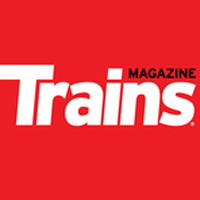
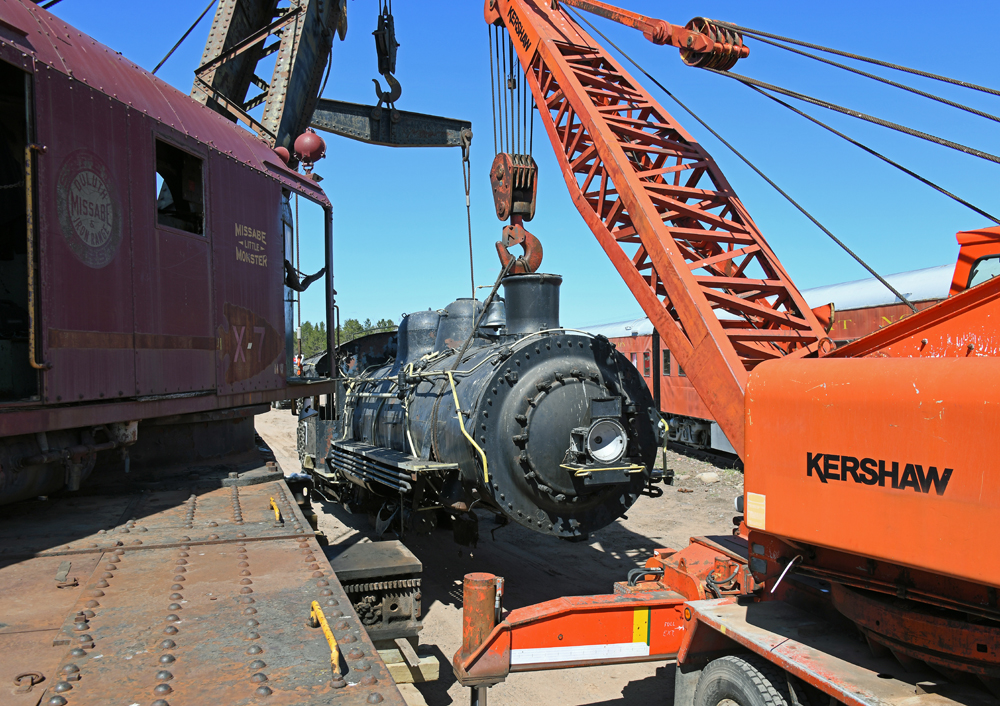
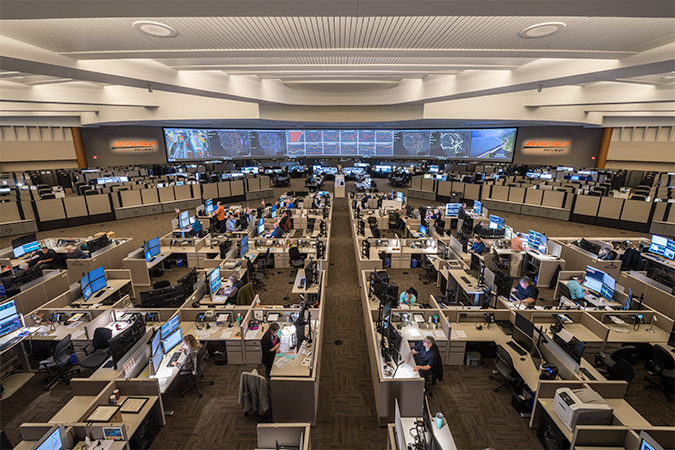
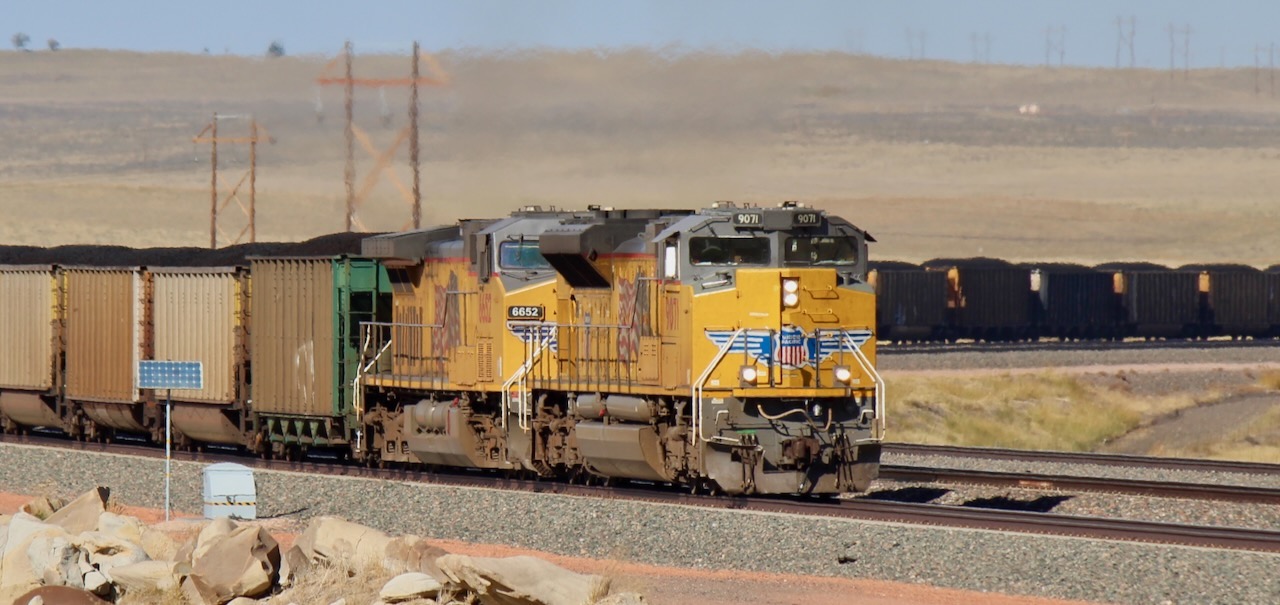




It has always been my opinion that Amtrak, WSDOT, and Sounder all decided to make Talgo the “fall guy” for this accident to cover their mistakes. It seems the only reason Talgo is still doing business in the US is the rebuild/overhaul work they have gotten (overhauls of the original Bombardier bilevels for Metrolink and overhauls of the LA subway cars)
They could be used in Ukraine to handle the gauge break with the rest of Europe.
I suspect these may wind up in Nigeria (?) as the unsold and unused Talgo 8 train sets that WI refused to buy were.
If California had any sense it would buy them and put them to work on the Surfliner route.
I agree with all of the above. These are unique advance-designed equipment. Would have loved to see these stretch there legs between Chicago and Detroit.
I agree Charles, prior to the accident on 18 December 2017, there had never been a fatality accident involving Talgo in over 20 years of operation. No car is going to survive a derailment at that kind of speed.
Not only the equipment was blamed, but also the R/W, which was closed for a long period of time after the incident. Neither the equipment nor the R/W was to blame for the crash, nor for the extent of the injuries and the deaths.
Sound Transit, Amtrak and WSDOT were the liable parties but Amtrak took most of the hit. The Talgo 8’s were running on a waiver from FRA if memory serves. If no state wanted to take them on then they are essentially worthless.
I am not sure what a museum could do with a fixed set of cars like these. Parts would be difficult to get domestically, the expertise pool would be very small.
And we wonder why certain European based companies abhor doing business in the United States. When in Europe I was always reminded by the natives that while the US is “fun”, we eat too much McDonalds and sue each other too much.
“Amtrak is auctioning off its Talgo Series VI trainsets, retired in the wake of the fatal derailment of an Amtrak Cascades train in December 2017.”
The article is misleading. A reader is likely to infer that this equipment is being sold because the “fatal derailment” showed to it to be unsafe. Talgo categorically asserts that such an inference would be wrong, and that the trainsets were and continue to be safe for the riding public. Otherwise, why did Amtrak and WSDOT continue to run them in daily revenue service for more than 28 months after the December 2017 accident? In fact, this equipment was removed from service in mid-2020 because neither WSDOT nor Amtrak wanted to renew their maintenance contracts with Talgo.
Amtrak’s continued operation of this equipment for years after the DuPont derailment shows that neither it nor the Federal Railroad Administration had any question regarding its safety. The misunderstanding comes from the fact that the Talgo “Series VI” was built to modern European standards and thus did not meet an archaic North American requirement, dating from 1912, for “static end strength” intended to protect passengers and crew in the event of a collision.
Of course, DuPont was an overspeed derailment, not a collision. The FRA found no evidence of failure due to end loading. Thus, the issue of static end strength was completely irrelevant in this accident. The FRA had approved operation of this equipment because its careful analysis demonstrated that even in the case of a collision the European design provided a level of safety equal to or better than that of the North American standard, which had its roots in the wooden car era. Subsequent to that finding, the FRA created modern “Alternate Compliance” rules for high-speed train sets intended to allow European designs to be used here. The new Amtrak Acela will meet this new standard, not the old one. The old Series VI would meet it as well.
“…two cars listed as “first class” coaches, two “first class” ADA coaches,…”
The so called “first class” cars are business class. Seating is 2+1,
“…one coach and one ADA coach with lavatory, listed as with no trucks, are in Seattle…”
Both cars have their trucks, but being articulated segments, there is one in the middle and one at one end, none at the other.
I struggle to understand why the equipment was blamed for the deaths and injuries. No rail cars are rated to protect passengers when falling off a bridge.
They actually are. Imagine if these Talgo cars got into a head-on with another train. Based on their performance in this crash, I’d expect them to end up telescoped inside each other. At least those Amfleets and Superliners somewhat hold their shape and don’t just disintegrate.
To the contrary, AMTK 81528 did disintegrate on May 12, 2015, at Frankford Junction, Philadelphia, PA. AMTK 28002 folded in half on February 4, 2018, in Cayce, SC.
I suspect these will probably get scrapped or sent overseas, but it would be really nice if at least a couple could be preserved. An important part of Pacific Northwest railroad history.